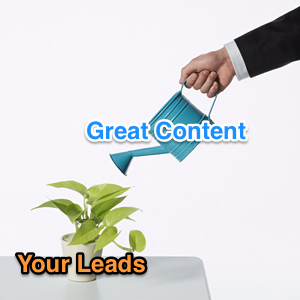
Ever since workflows were announced at Inbound last year, people have been really impressed with the flexibility of the tool. But then they get overwhelmed. Then they put it off. It's ok. A tool as powerful as workflows can be daunting. Here are some easy ways to get started using them.
1. Decide if you Need Lead Nurturing
Begin by looking at the overall volume of leads you receive and whether you can currently handle it. If your company only needs a few leads every month, or the leads you get are very well qualified, nurturing might just get in the way of your sales process.
If the leads you get aren't sales-ready (which is common), then lead nurturing could make more sense for your company. That way you can continue to send them great content without being as intrusive.
2. Plan, Plan, Plan
Lead Nurturing can be very complicated, but the best way to prevent that is by coming up with a clear plan at the very beginning of the process. A recent article on B2B Marketing Mentor from Jeffrey Russo, a product manager from HubSpot, talks about how they plan their nurturing campaigns there:
"At HubSpot, we’ve created a segmentation formula that’s both easy to get started with and scales nicely over time. If you were to look at our lead nurturing campaigns, we divide them according to two characteristics: persona and lifecycle stage."
Keeping everything based on those two characteristics allows you to both cover all your bases and make sure your lead nurturing campaigns stay manageable.
3. Begin with the end in mind.
In addition to being great advice from Steven Covey, it's also great for planning lead nurturing campaigns. What's your end goal? Click 'Buy' somewhere on the site? Download a demo? Talk to a sales rep?
The end goal will vary for each company, but you need to be clear about it up front. Decide what the hand-off point will be for your organization. When does a lead leave marketing and go to sales? This is where having a service level agreement (SLA) between marketing and sales can come in handy. That way everyone is clear what constitutes a sales-ready lead versus a market-qualified lead and so on.
Great advice from Steven Covey. Also important here. If you don't have a clear funnel that's already defined, lead nurturing could get just muddy the waters.
4. Add value
No one wakes up in the morning hoping they get more email today. So make sure that what you're sending out to prospects is actually valuable. Put yourself in their shoes, and think about what would make your decision easier, and how could you provide great content for them.
Plenty of nurturing or 'drip marketing' campaigns don't involve content, and just send out automated email messages design to see if you'll respond. Don't do this. Send something useful - a helpful study, a link to a blog - but something that leaves them a little bit better off than before they opened your email.
Work throughout all of your marketing to establish your organization as an expert, and then people will trust your opinion.
5. Lead Nurturing is More Than Just Email
Just because lead nurturing can become some giant decision tree of attributes, doesn't mean it should. Even if someone doesn't respond to your email, they could still respond to your blog, your social media, or just visit your website.
Don't create such a tight-knit nurturing campaign that it falls apart if people go out of order. People don't get every email, or don't respond to everyone, so keep them all generic, and able to work with other channels. Give people plenty of opportunities to engage with your message, and when they're ready they'll reach out in one way or another.
Lead nurturing is a powerful tool, and a lot of people get hung up on how to get started. Don't let that be you! Focus on personas and lifecycle stages and plan out what your goal is. Follow these rules and you'll be on your way.












